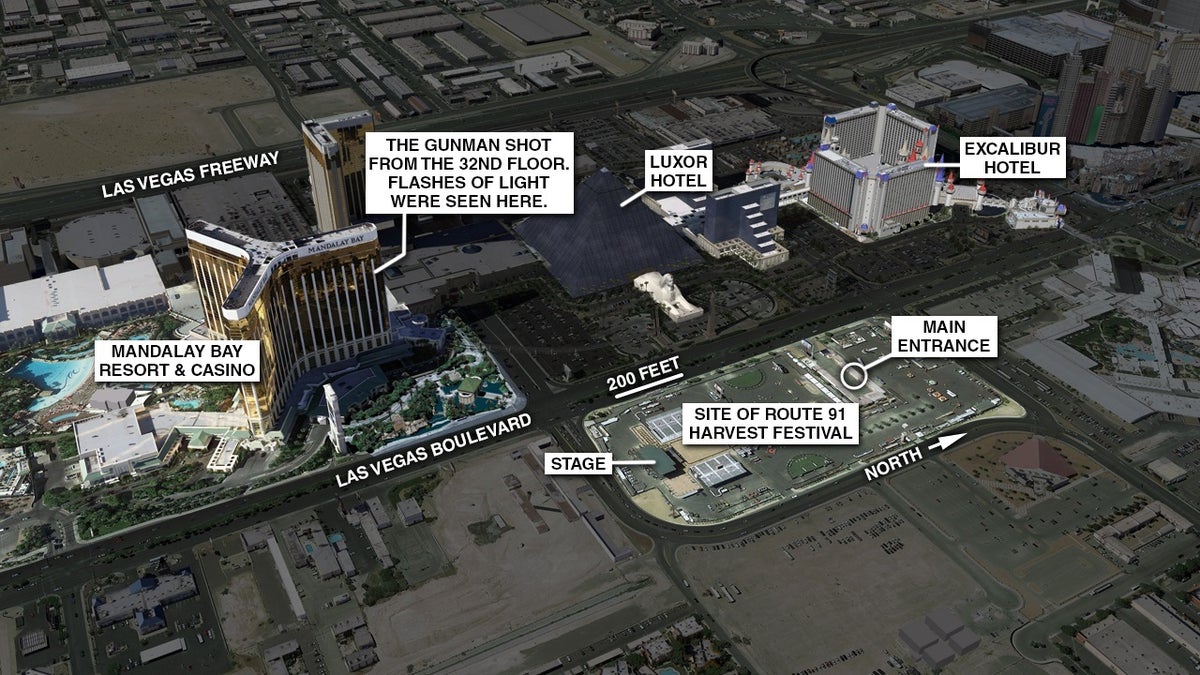Las Vegas Shooting: Uncovering The Location & Timeline [Maps & More]
Can a single act of violence irrevocably shatter the illusion of safety? On October 1st, 2017, the vibrant energy of the Las Vegas Strip was replaced by the deafening sound of gunfire, forever altering the city's identity and the lives of countless individuals.
The tragic events of that night unfolded at the Route 91 Harvest music festival. As the final set of the evening was underway, a gunman, later identified as Stephen Paddock, opened fire from the Mandalay Bay hotel. The onslaught of bullets rained down upon the crowd, turning a night of music and celebration into a scene of unimaginable horror. More than fifty people lost their lives, and hundreds more were injured, their lives forever marked by the trauma of that day.
The location of the shooting, a stark reminder of the tragedy, is situated at 3901 South Las Vegas Boulevard in Las Vegas, Nevada. It's a place now etched in the collective memory, a site of mourning and remembrance. The "2017 Las Vegas Strip Shooting Memorial," as it is often referred to, stands as a testament to the lives lost and the resilience of the community. Google Maps offers several listings that pinpoint the shooting site and memorials, providing a digital space for reflection and remembrance.
In the aftermath, authorities struggled to piece together the details of the attack. The Las Vegas Metropolitan Police Department (LVMPD) responded swiftly, but the scale of the event posed immense challenges. The incident spurred a comprehensive investigation, and prompted the creation of detailed maps and timelines to establish a clearer understanding of events. The New York Times, among other news outlets, launched its own independent investigations, aiming to establish a timeline independent of that offered by officials. These investigations pieced together the fragmented narrative, relying on witness accounts, video footage, and forensic analysis.
The LVMPD's response to the tragedy also revealed a crucial aspect of their daily operations. Officers regularly respond to calls for help from the Clark County community, with the call for service data meticulously recorded through the CAD (Computer-Aided Dispatch) system. These records provide vital context to the response to the shooting and the wider challenges facing the community. In the wake of the shooting, understanding the intricacies of these systems became even more critical, as investigators sought to understand both the incident itself and the overall context of public safety in Las Vegas.
The incident highlights the ongoing challenges of securing public spaces. Security measures were re-evaluated, with emphasis placed on enhancing safety protocols for large gatherings and entertainment venues. The mass shooting led to a shift in the public's perception of safety and security, reinforcing the importance of constant vigilance and preparation for unexpected incidents. This emphasis on awareness and prevention has led to increased training and enhanced security infrastructure throughout the city.
One of the important aspects is a detailed map. The "Las Vegas Valley Shooting Closure Map" illustrates the restricted zones, encompassing urban areas and surrounding regions. These maps served as a practical guide to restrictions and provided a comprehensive overview of the areas where public access was limited.
The memory of the 2017 Las Vegas shooting continues to live on. The incident remains an important case study in terms of mass violence and its impact on communities.


